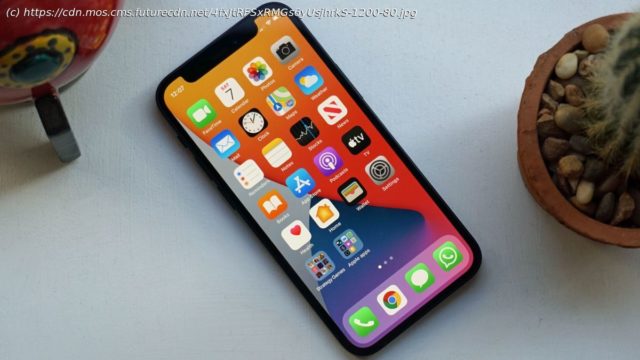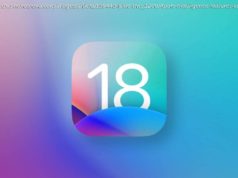Apple’s new iPhone 13 is coming later in 2021, and here’s everything you need to know about Apple’s next iPhone family.
The iPhone 13 range is fast approaching, with September being the likely launch month. But you don’t have to wait until then to find out all about the phones, as they’ve been extensively leaked already. We’re expecting a new iPhone 13, iPhone 13 mini, iPhone 13 Pro, and an iPhone 13 Pro Max. Leaks and rumors keep rolling in, revealing everything from the likely release date to the probable design, expected specs and some exciting new features. These include things like significant camera improvements, loads more storage than ever before, a silky smooth 120Hz refresh rate for the screen, and a more powerful chipset. Not everything’s likely to change though, as it’s looking likely that these phones will mirror the iPhone 12 ’s design, and there’s even a chance we could see the phones launch under the iPhone 12S name instead of the iPhone 13 moniker, marking them out as just modest upgrades. Want the full picture of the iPhone 13 leaks so far? You’ll find it below where we run you through each element of the upcoming phones. And check back soon, as this article will be regularly updated with all the latest iPhone 13 news ahead of the big reveal later this year. The iPhone 13 release date is likely to be in September 2021, and we expect it to hit stores on either the third or fourth Friday of the month (which makes it September 17 or 24). Before 2020, Apple has often announced its new iPhones on either the first or second Tuesday of September. If that happens again in 2021, we’d expect the iPhone 13 range to be revealed on September 7 or September 14 and release 10 days later. Though Wednesday is occasionally used, meaning it could be September 8 or 15 instead. An analyst has now said to expect an announcement in the third week of September this year, which means that September 14 (or 15) is the most likely date. Based on Apple’s usual approach we’d then expect pre-orders to open on September 17 (the Friday), with the release date being September 24 (the following Friday). There’s no guarantee this will be the iPhone 13 release date though, and that’s mostly due to the Covid-19 pandemic. The iPhone 12 and iPhone 12 Pro were pushed back to October in 2020, and the other two devices – the iPhone 12 mini and iPhone 12 Pro Max – were released in November of that year. Plus, apparently the 2020 delay resulted in increased sales for the phones. That may mean Apple decides to keep to this new window, but there’s no real indication of that. The only price leak about the iPhone 13 range suggests that the upcoming models will cost a similar amount to the iPhone 12 range. That’s in line with what we’d expect too. We’ll be sure to include more 2021 iPhone price leaks and rumors as we hear them, but below you can see the prices for the iPhone 12 series that we’re relatively confident will be similar on the iPhone 13. If anything though prices might rise slightly this year, especially outside the US, with rumors that much of the world will get the mmWave 5G tech that US iPhone 12s already support, pushing the price up in the process. But we wouldn’t expect a big change. First off, we’re expecting four members of the iPhone 13 family. Those are likely to be – but this isn’t guaranteed – the iPhone 13 mini, iPhone 13, iPhone 13 Pro and iPhone 13 Pro Max. The company focused on three models until 2020, when it introduced the mini model as the fourth handset in the iPhone 12 family. Most rumors suggest that’ll continue in 2021. If any model gets dropped it would probably be the mini, as the iPhone 12 mini reportedly hasn’t sold well, but rumors suggest Apple will still make an iPhone 13 mini (though perhaps in place of an iPhone SE 3). The below is our best picture of specs we expect so far for each model. Note that everything here is based on leaked information, and there is no guarantee we’ll see similar from Apple when the phones are unveiled. We’re expecting similar designs to the iPhone 12 family across the iPhone 13 range, but a recent rumor suggests that Apple will manage to trim down the camera bump this year, as well as introduce a matte black option for the Pro models of the phone, reworked from the current graphite. The notch might also be changing, with some sources claiming that it’ll remain the same size as the iPhone 12 but many others believing it’s more likely to shrink. Indeed, far more sources point to it shrinking than staying the same size, so a smaller notch seems likely, with one source adding that the Face ID sensor has apparently also been shrunk, which would allow for a smaller notch. We’ve now also seen a couple of leaked photos reportedly showing the screen glass for the iPhone 13 range, and there’s a visibly smaller notch, achieved by moving the earpiece to the bezel above. Similarly, a 3D-printed iPhone 13 mock-up also shows a smaller notch. Specifically the notch here is 26.8mm wide (compared to 34.83mm on the iPhone 12), but it’s also 5.35mm deep, making it stick out a tiny bit more than the 5.3mm one on the iPhone 12. The mock-up also shows that the contents of the notch may have been moved around a bit, with the selfie camera shown on the left rather than the right, and the earpiece moved into the bezel. The smaller notch can once again be seen in some unofficial renders, which also highlight a slightly different camera layout but an otherwise similar design to the iPhone 12 range. An iPhone 13 Pro Max dummy unit – created based on leaked schematics and other leaks – also shows a smaller notch, as well as larger camera lenses (more on which further down). However, the design and even the size is otherwise more or less the same as the iPhone 12 Pro Max. We’ve seen a very similar design in unofficial iPhone 13 Pro renders, supposedly based on a ‚finalized version’ of the handset. These include a larger, flatter camera bump than on the iPhone 12 Pro, plus larger camera sensors, a smaller notch, and an apparently less fingerprint-prone stainless steel frame. Leaked CAD files also show a smaller notch, plus a diagonal camera layout for the iPhone 13. They appear to show a slightly thicker build too, likely to accommodate the larger batteries that have been rumored. Plus, we’ve also seen dummy units of the iPhone 13 and iPhone 13 Pro, which again match up with all the leaks above, so this design (shown below) is very likely what we’ll see from the iPhone 13 range. Note also the colors used here, which appear to include white for the dual-lens iPhone 13, and silver for the triple-lens iPhone 13 Pro. So perhaps these will be among the colors that the phones are sold in. And we’ve now seen chassis models of the iPhone 13 range as well. These were shared by a case maker and are used by it to design cases. Apparently the company has already made cases based on these designs too, so it’s presumably confident in them. You can see images of these chassis models below, and they fully match up with what we’ve seen elsewhere – with the biggest visual differences being the layout of the cameras on the iPhone 13 and iPhone 13 mini, and the size of the camera blocks on the iPhone 13 Pro and iPhone 13 Pro Max. Another leak has also suggested the company may finally be ready to introduce an under-display fingerprint scanner. A lot of Android manufacturers include this technology on flagship phones, and this leak suggests Apple is ready to follow suit. In fact, we’ve now heard talk of an in-screen scanner multiple times at this point, with Apple apparently considering it in addition to Face ID. This isn’t a certainty, though, as noted Apple analyst Ming-Chi Kuo suggests the feature is coming in some 2022 iPhones – aka the iPhone 14 – and will presumably skip the iPhone 13 line. Some sources suggest this change is further out, but an iOS 15 leak suggests the company’s next major software update will arrive with support for dual biometric authentication – a feature which would only be possible to implement on a device with both Face ID and Touch ID. Still, we wouldn’t count on this. If you’re interested in this feature, check out our deep dive on the case for and against in-screen Touch ID.






